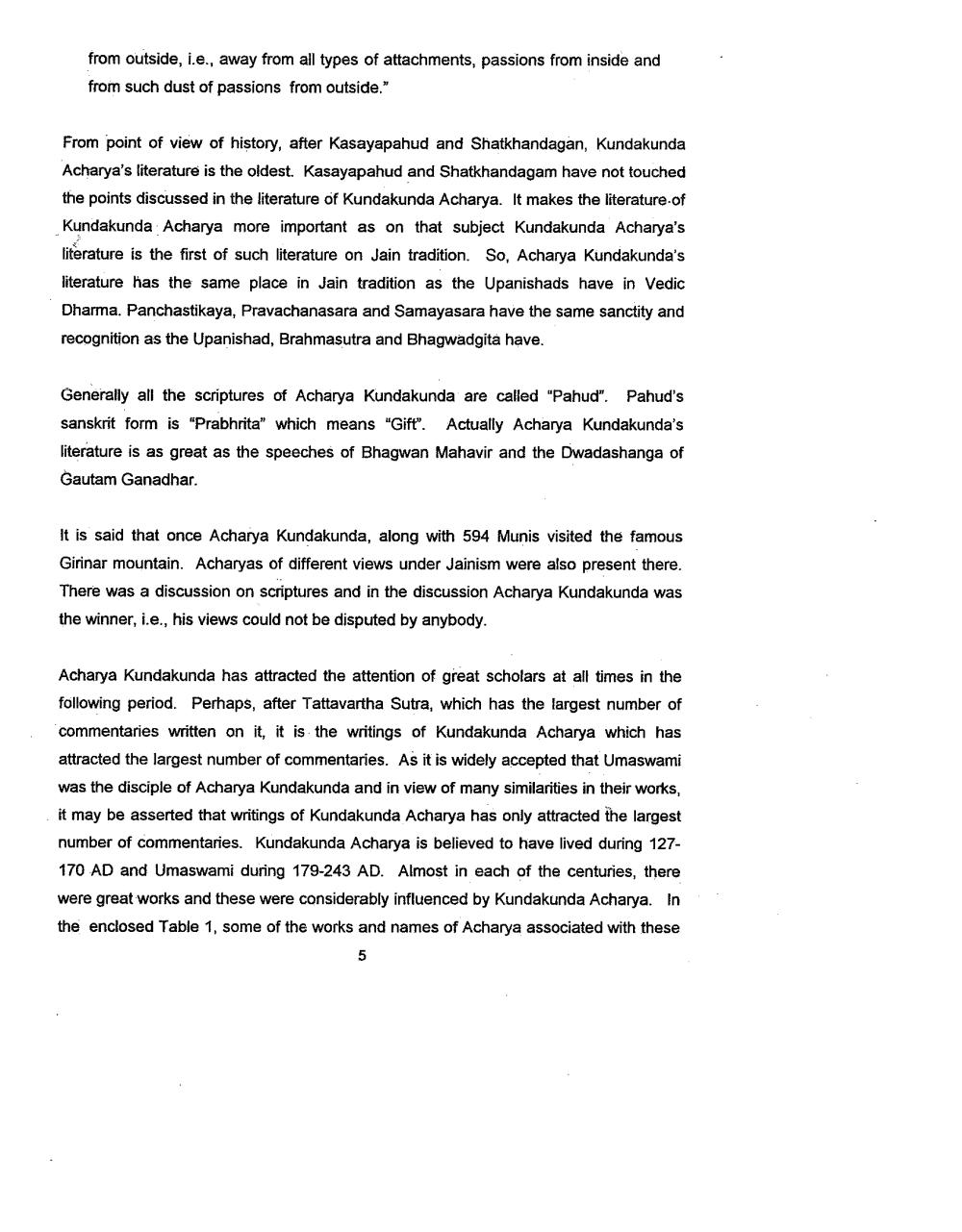________________
from outside, i.e., away from all types of attachments, passions from inside and from such dust of passions from outside."
From point of view of history, after Kasayapahud and Shatkhandagan, Kundakunda Acharya's literature is the oldest. Kasayapahud and Shatkhandagam have not touched the points discussed in the literature of Kundakunda Acharya. It makes the literature of Kundakunda Acharya more important as on that subject Kundakunda Acharya's literature is the first of such literature on Jain tradition. So, Acharya Kundakunda's literature has the same place in Jain tradition as the Upanishads have in Vedic Dharma. Panchastikaya, Pravachanasara and Samayasara have the same sanctity and recognition as the Upanishad, Brahmasutra and Bhagwadgita have.
Generally all the scriptures of Acharya Kundakunda are called "Pahud". Pahud's sanskrit form is "Prabhrita” which means "Gift”. Actually Acharya Kundakunda's literature is as great as the speeches of Bhagwan Mahavir and the Dwadashanga of Gautam Ganadhar.
It is said that once Acharya Kundakunda, along with 594 Munis visited the famous Girinar mountain. Acharyas of different views under Jainism were also present there. There was a discussion on scriptures and in the discussion Acharya Kundakunda was the winner, i.e., his views could not be disputed by anybody.
Acharya Kundakunda has attracted the attention of great scholars at all times in the following period. Perhaps, after Tattavartha Sutra, which has the largest number of commentaries written on it, it is the writings of Kundakunda Acharya which has attracted the largest number of commentaries. As it is widely accepted that Umaswami was the disciple of Acharya Kundakunda and in view of many similarities in their works, it may be asserted that writings of Kundakunda Acharya has only attracted the largest number of commentaries. Kundakunda Acharya is believed to have lived during 127170 AD and Umaswami during 179-243 AD. Almost in each of the centuries, there were great works and these were considerably influenced by Kundakunda Acharya. In the enclosed Table 1, some of the works and names of Acharya associated with these




